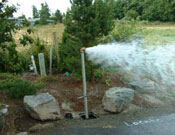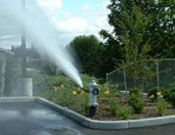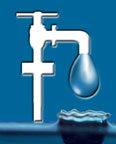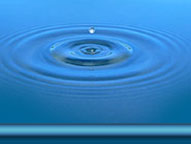|
| |
Water Quality
Water Quality Monitoring map.
The
Story of Water

|
ABOUT
CONSUMER CONFIDENCE REPORTS (CCRs)
Safe
Drinking Water is
a concern for everybody in the United States and around the world. Drinking
water must be protected, preserved, and conserved. Only 1% of the water on Earth
is fresh water, and therefore, drinkable.
The U.S.
Environmental Protection Agency (U.S. EPA), and the State of Washington
government agencies, and your Summit Water are making significant efforts to
inform you about your drinking water.
The Safe Drinking
Water Act (SDWA) was developed and became law in December 1974. The SDWA was
amended in 1986 to include regulating 25 new contaminants every 3 years. As a
result of these 1986 amendments and the Citizens Right-To-Know Initiative the Consumer
Confidence Reports (CCRs) became a
requirement in the 1996 SDWA amendments.
Beginning in
October, 1999, we at Summit Water were required by federal and state regulations
to provide you with a CCR.
Annually you must receive a CCR by July 1st. The
CCR is similar to a nutrition label for water. Summit Water is required to
report the following:
|
|
| • |
Source of
your drinking water (Common Name, including whether it is surface water,
ground water, or a combination of both)
|
| • |
Susceptibility
to contamination based on Source Water Assessments (SWA)
|
| • |
Likely
sources of contamination that may effect your water source) How to
obtain a copy of the SWA ? (Your can obtain a copy of the SWA from your
state government agency in 2003).
|
| • |
Likely
source and potential health effects to you if contaminant(s) are
detected (Health effects language is required to explain the effects of
the contaminant(s).
|
| • |
Education
statement for vulnerable populations (HIV, immune deficient patients)
about avoiding Cryptosporidium.
|
| • |
Information
is required on nitrate, arsenic, and lead if detected above 50% of EPA's
standards.
|
| • |
Compliance
information about other state and federal drinking water requirements.
|
| • |
Safe
Drinking Water Hotline Number 1-800-426-4791 |
| Summit Water
delivers the CCRs to you, through the mail, public postings, and beginning in
2001 posting a copy on the Internet. Additional copies may be obtained at the
Company office, or downloading from the Company website. If you would like
additional information on the SDWA and/or more information on the purpose and
materials which are to be addressed in the CCR, please contact the Safe Drinking
Water Hotline at 1-800-426-4791. |

SUBJECT:
- NON-POTABLE WATER USE
POLICY NO. 7.10

|
Fire hydrants
shall not be used for any purpose for other than what is stated in the
referenced section of the Uniform Fire Code. Therefore, no water shall be
withdrawn from any fire hydrant for construction purposes, roadway cleaning or
parking lot sweeping, or any non-fire protection purpose, other than flushing of
mains by Summit Water personnel.
The use of
potable water for the parking lot, street sweeping, construction purposes, etc.,
shall be allowed, when and where available, only when the Manager has determined
there is adequate supply available, that there is no adverse effect on water
quality, and the use conforms to the best use of the resource.
|
 |

|
| Blow
Off Assembly - Used for flushing a water main, or on high elevation
point of the water main system, used to relieve air from the water main.
New installations are placed in the meter box, to improve protection and
make it less visible. |
Flushing from a hydrant, also for performing hydrant flow.
|
|
The location
of withdrawal for non-fire use shall be established by the Company, with proper
valves, caps and other appliances as deemed necessary by the Company.
All water withdrawals shall be in conformance with the protection of surface
water as required by Pierce County Ordinance 96-46S2, Chapter 18C.10.
Before
commencing such usage, a request shall be made to the Company and a cash
payment shall be made in the amount established by the Board of Directors as a
use charge. An account shall be established, and a deposit of funds placed for
the estimated volume of water to be used for the project, at a rate to be
established by the Board of Directors. All use shall be metered, and if it is
determined by the Manager to meter is impractical, a charge shall be fixed by
the Manager.
When water
service is supplied, for any purpose other than fire fighting, a charge shall be
made which reflects the full cost of providing said service and encourages the
conservation of the resource for the best use of our members.
|

|
Permit,
fees and charges:
A permit must
be obtained prior to the use of any approved connection to the Company
system. The proposed use must be disclosed at the time of the permit
application. The Manager shall determine what type of backflow protection must
be provided. Any direct connection must be authorized by the Company and be
operated by trained personnel in accordance with established water industry
practices. Direct use of water main connections, such as a blow-off shall not be
used for filling swimming pools.
If the
contractor or customer refuses to pay the invoiced amount, the Manager shall
cause the water service, to the benefited premises, to be discontinued until
full payment is received.
A penalty, of an
amount established by the Board of Directors, shall be levied for unauthorized
use of the Company water, and the Manager shall cause the water service to the
benefited premises or the business location of the unauthorized taker of the
water to be discontinued until the payment for all fees, charges and penalties
are received in full by the Company. SEC710r
|
|


